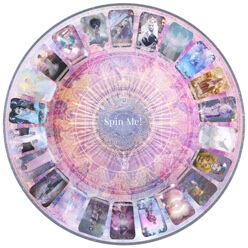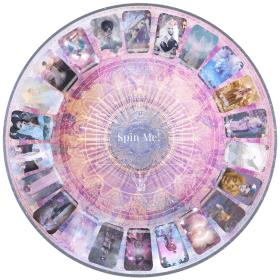Christmas Tree Supersitions

Unlock the hidden secrets of the Christmas tree
We all love Christmas trees. The festive, fresh smell that the Christmas trees bring to your living room is just wonderful.
It is important to know the traditions behind the Christmas tree. Many people don’t stop and think beyond the fresh fragrances and the wonderful gifts they get packed beneath their Christmas tree. Learning what the Christmas tree means is interesting, especially at this time of year, whether your celebrating Christmas or have celebrated Christmas in the past, or have never attempted to celebrate Christmas: the tree is an integral part of Christmas - it should be admired! Let us understand some popular beliefs and superstitions in regard to the Christmas tree.
The Burning Of Christmas Trees:
Though the Germans get credit for the origination of the modern Christmas tree, the first Christmas tree to be recorded in history has its roots with the Latvia in 1510 and Estonia in 1514. At every eve of Christmas, they would wear black and carry evergreens decorated with rose and match to the merchants’ guild’s which was known as the House of Blackheads located in the port city of Riga, Latvia. They gathered around the tree and the climax of the ceremony would be bachelor merchants, burning the Christmas tree’s as they danced in circles. The burning evergreens represented a toast to the New Year.
The Edibles on The Christmas Tree:
Traditionally, all the decorations on the Christmas tree were edible; that was until Germans’ inroduced glass ornaments. These became widespread and popularized in the USA by New York toy wholesalers in 1883. Before then, the tree decorations were twisted pretzel, which symbolized the hand formation of prayer; flat gingerbread; matzebaum which was a German wafer cake that was made of sugar, almond paste, egg whites and sugar; colored popcorns; fruits and sugar plums; nuts. All these were hung on a Christmas tree feast at the end of the night.
Christmas Tree Behind All-American Holidays:
The first American Christmas tree is represented in a drawing by John Lewis Krimmel in 1812. This resulted in the tree becoming more and more popular in America. The advent of fashion journalism, Thanksgiving, Mary had a little lamb and the publication of the first Christmas eve and of course the famous Christmas tree that grew from the floor to the ceiling are all in the Godey’s Lady Book.
A magazine published in America called Godey’s Lady’s Book made the Christmas tree famous. The readers were generally wealthy as the publication was expensive at $3. In December 1860, the Godey’s publication carried a story by Lizzie Mclntyre which featured a Christmas tree that was placed in a widowed mother’s room. Before then, it had published a depiction of an American Christmas tree which was an adaptation of the Queen Victoria’s Christmas tree.
The Money Brought Through Christmas Tree Sales:
North Carolina and Oregon monopolize Fraser Firs which are the perfect Christmas trees in the USA and around the world. Annually, they harvest 5 million trees, with North Carolina Christmas tree industry the income is more than $100 million per Christmas season. In the USA, there are over 15,000 Christmas tree farms which employ more than 100,000 Americans, meaning, Christmas trees are a source of revenue and employment.
Sacred Christmas Tree:
Whichever way you look at it, Christmas trees are sacred. Though traditionally it was argued that, there is so much paganism surrounding Christmas trees, there are also some traditions which portray trees as sacred to religious significance. Instead of calling Christmas tree practice as paganism, it will be best to refer to them a fusion of religion and traditions. Researchers believed that the early Romans cults and ancient Egyptians used to think that the evergreens will continue blooming during the cold months. Thus, people cut the Christmas trees down, as they considered them sacred, and brought them into the house so that they could protect the families from danger in the new year. In the 14th century, Christians used the Christmas trees during miracle prayers, especially on Christmas eve while connecting this to Adam and eve in relation to the tree of life.
The Christmas Trees Were Traditionally Preferred Short:
In 1531, Christmas trees were recognized as a widespread tradition in Alsace, which was a former Germany territory (but currently it is part of France). This is where history records that the German’s sold undecorated trees in public markets. The demand was so high that it is on record at that time, local priests had to limit the trees per household. No more than one bush (Christmas tree) of more than eight shoe’s in length, which translates to 4 inches tall. It means, that Christmas trees were short enough to be placed on top of a dinner table.
Pennsylvania Is Where The First Christmas Tree Was Spotted in America:
The first record of a Christmas tree in the USA is in a German-owned Church in Bethlehem, Pennsylvania in the year 1747. Other accounts of America Christmas trees are not that clear. In the 1820s, there are accounts of Christmas trees in Philadelphia. As we already mentioned above there is an 1819 sketch of an American family sitting around a Christmas tree on the dinner table. In 1825, it then became popular that major American cities across the world embarked on having Christmas trees in the centre of the town or city.
This was recorded in a news article in the, Philadelphia’ Saturday Evening Post. The reason why Christmas trees took the time to become popular in America is due to fear of fires; candles were used to light up homes which caused society to experience frequent fires and, thus the fear.
A Christmas Tree Was A Charitable Display: Though the trees were loved, they weren’t affordable to everyone, the Germans pioneered in the art of placing trees in public, but it is the Americans who capitalized in using public Christmas trees, to raise funds for charitable organizations. It all started in the 1830s when a well-known charitable organization; the Dorcas Society of York, set up a gorgeous Christmas tree and asked people to donate 6 cents and a quarter in order to view it. Churches, charities, and shelters use Christmas trees for fundraising. It is nowadays commonplace to find thousands of Americans fundraising for Christmas trees. Traditionally, little messages are placed on Christmas trees also. Now that you have learned something new about Christmas trees, share the information with friends on social media.
By Florance Saul
Dec 21, 2016







